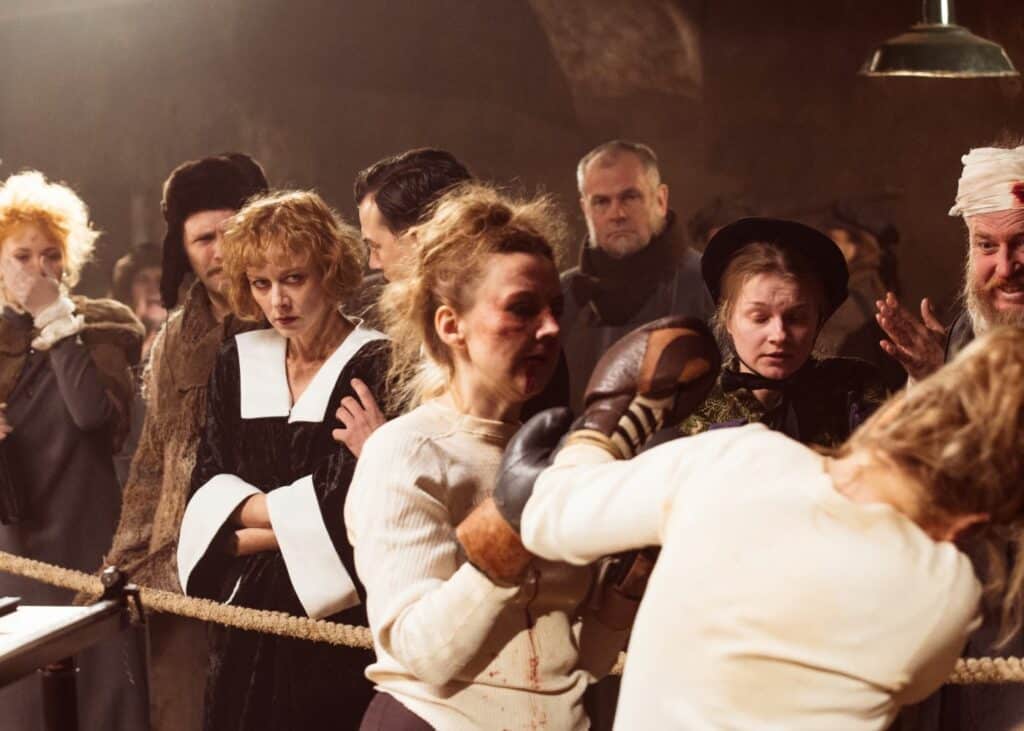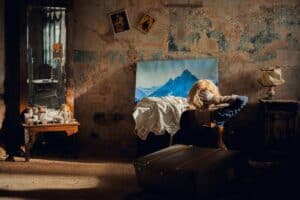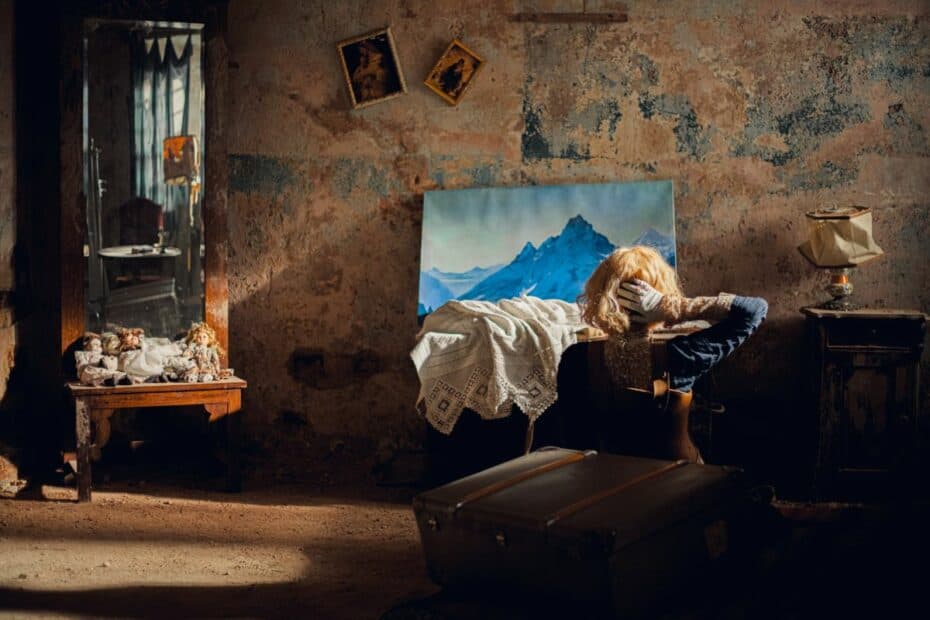Lotus is the debut film by Signe Birkova, and it enjoyed its world premiere in the First Feature Competition at the 2024 Black Nights Film Festival. The film’s centre is Alice von Trotta (Severija Janušauskaitė, magnificent), who in 1919 returns to a house she inherited after her father. She wants to make a film, and among several peculiar people she meets, the most important might be the vampiric Madam Falstaff (Rezija Kalnina), with whom she gets close. The latter has ulterior motives and wants to use Alice’s talents to make a propaganda film. That is what the synopsis says anyway, but this is the kind of film where a plot summary doesn’t reveal much about the work in question.
At one point in the film, a character says to Alice, “Your script is very peculiar”, and Madam Falstaff notes, “You can’t shoot it”. Some critics’ responses to Birkova’s film have been similar. A Hollywood script doctor (which some directors sorely need) would have had plenty of complaints about Lotus, and all of them would have been misguided. It is more than evident that the director does not strive for a pat narratological cohesiveness but seeks to explore what cinema and its tools can achieve. One of the most obvious clues of what Birkova is after is the usage of a camera from 1921, four years before Bolex was founded. Her film moves beautifully in an entirely cinematic multiverse universe.

Neither White nor Blue Lotus
Before the screening, the director advised us to tighten our seat belts since what awaited us would be a wild ride. Some spectators chose not to heed that advice and instead, rather quickly opened their proverbial seat belts and headed for the exit. I have done that during countless screenings this year, but it was never an option on this one. There are more cinematic references than you can count. On the other hand, the film is simultaneously theatrical with several histrionic performances, some of which take place on stages. It would be a lie to say that I always knew what was going on, but it would be an even bigger lie to say that I wasn’t constantly intrigued.
The films that came to my mind while watching Lotus were not necessarily the ones that were directly referenced. My mind instead wandered to the Czechoslovakian cinema of the sixties, not least Jakubisko or at its most accomplished; I even started drawing comparisons with Gábor Bódy. I am not saying that Signe Birkova, with her first feature, would be on the same level as said giants, but that they entered my mind says something about the scope of her vision. Martins Jurevics served as cinematographer and colourist on Lotus. His contributions are essential to a film that switches between 8mm, 16mm and 35mm film to create something different but still vaguely familiar in the best sense of the word.

A litmus test for critics and others
Lotus will not be to everyone’s taste. Some critics have already proven as much, but this is a must-see for anyone seriously interested in cinematic expression. Hopefully, this film will travel to numerous festivals. If it comes to a festival near you, this is one to look out for. You won’t regret watching it, but if you do, you will at least have learned where your cinematic limits are. That would also indicate that it is about time to do something about those limitations.
This is clearly a film that I will rewatch, and I can’t wait to find out where Signe Birkova’s future projects will take her cinematically. It was the shining star of the section, together with The Weeping Walk.
Lotus by Signe Birkova - The Disapproving Swede exciting

Director: Signe Birkova
Date Created: 2024-11-20 02:03
3
Pros
- Takes wild swings
Cons
- Not all swings hit their targets

